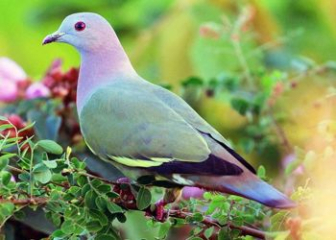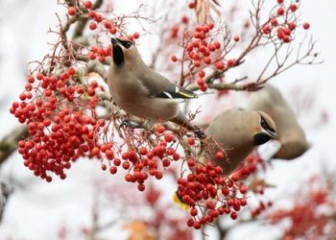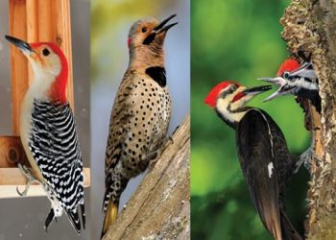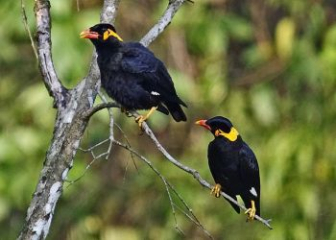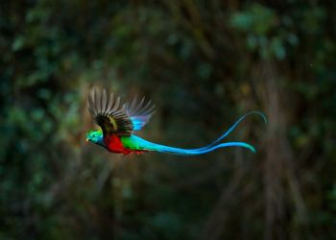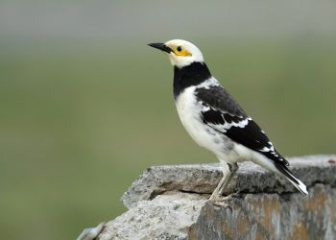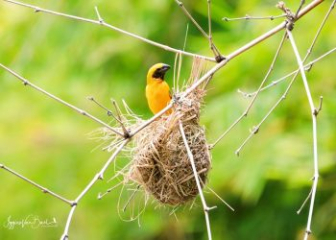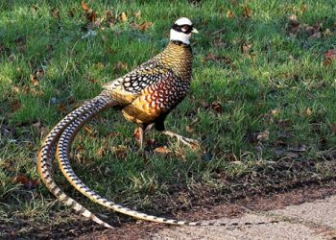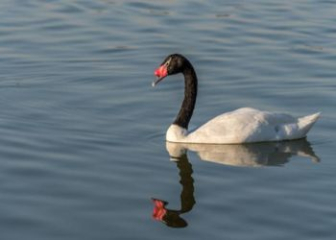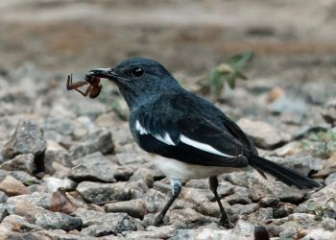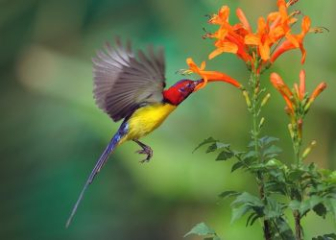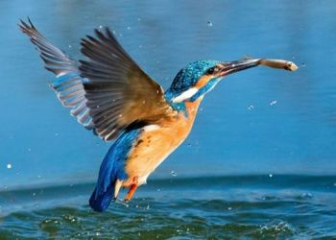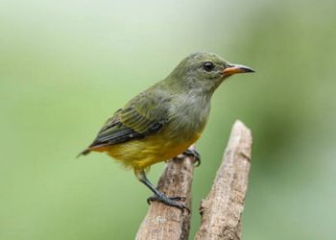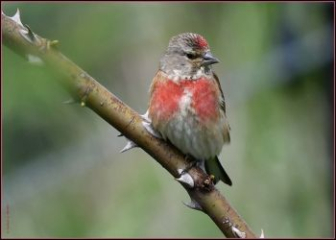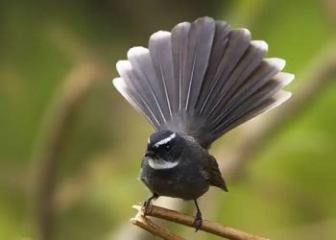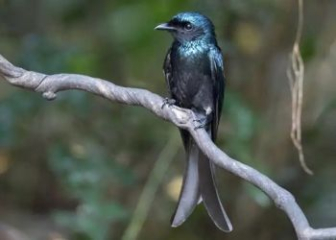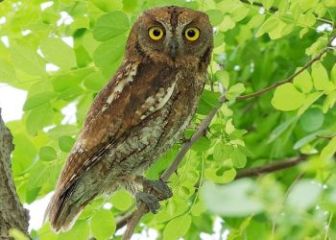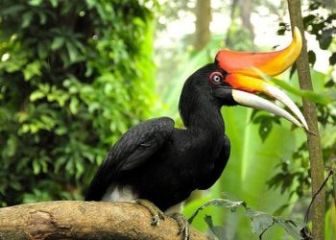Red Pheasant - Habits and most effective breeding techniques
Blog | by
Red pheasant (Phasianus colchicus) has brilliant copper-red feathers, long, graceful tail, majestic gait, easy to raise, high economic value, and is very popular.
The red pheasant (scientific name: Phasianus colchicus) is one of the ornamental birds that is both beautiful and brings high economic efficiency thanks to its value in the commercial industry. With its copper-red and purple feathers, long flowing tail and majestic gait, the red pheasant will be a perfect choice for your space.
So what is special about this bird, what are the breeding techniques to bring the highest economic efficiency? Let's find out the details in the article below of nicebirds !
Red pheasant information :
|
Common name |
Red Pheasant |
|
Scientific name |
Phasianus colchicus |
|
Set |
Galliformes - Order of Chickens |
|
Surname |
Phasianidae - Pheasant family |
|
Spend |
Phasianus |
|
Source |
Asia, Europe |
Origin of red pheasant
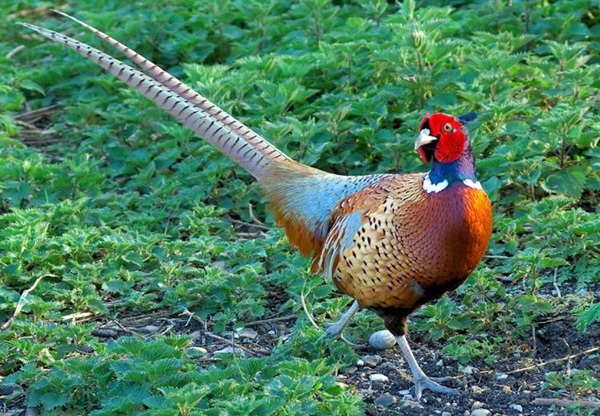
Learn about the origins of the red pheasant.
The scientific name of the red pheasant is Phasianus colchicus, the English name is Ring-necked Pheasant. It belongs to the order Galliformes, genus Phasianus. They originate from the Eurasian region, popular in the following countries:
- Caucasus Region: Georgia, Azerbaijan
- Central Asia: Kazakhstan, Uzbekistan, Turkmenistan
- Eastern Europe: Bulgaria, Moldova, Romania, Ukraine.
- China, Mongolia,...
The name “colchicus” is Latin for “Colchis" (present-day Georgia) - where this red pheasant was discovered.
Red pheasants have a long history of appearance and domestication, specifically as follows:
- Ancient times : Known since the 10th century BC, then brought to Europe as a hunting bird.
- Medieval Period : Widely bred in Europe, later became a symbol of sport hunting activities in England, Germany, France,...
- Modern : In Vietnam, this red pheasant species was introduced around the 20th century and is now very popular in ornamental, ecological and specialty business breeding.
Red pheasant classification
Currently, there are up to 30 different subspecies of red pheasants, however they are divided into two main groups: white-necked and non-white-necked, specifically as follows:
Red-throated pheasant (Colchicus group)
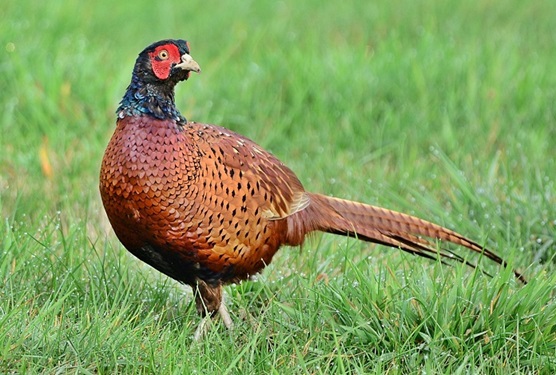
Image of red pheasant without white neck.
The red pheasant group has the most primitive origin, originating from the Caucasus region (Colchis - Georgia today) and Central Asia. The distinguishing feature of this group of red pheasants is that the neck has no white ring or if it has, it is only a thin, unclear streak.
The group of red pheasants without white necks is often kept as the original breed for commercial breeding and raised as high-class ornamental birds.
Some typical species of the Colchicus group - White-necked:
- Phasianus colchicus colchicus: Ancestral, no white collar
- P. c. persicus: Commonly found in Iran, has purple hairs
- P. c. talischensis: Rare
- P. c. mongolicus: The most common lineage
White-throated pheasant (Torquatus group)
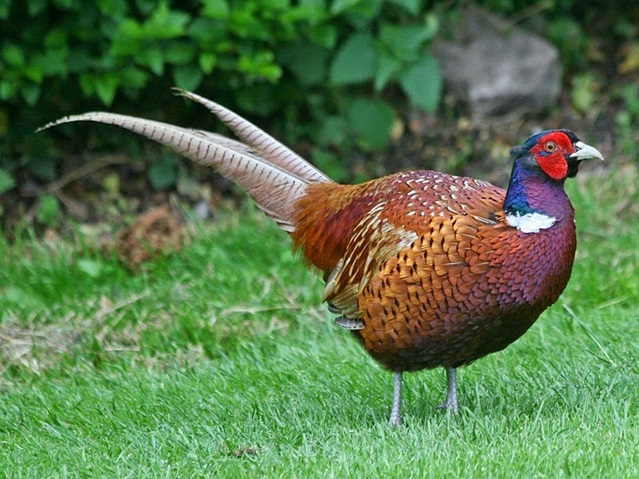
Red pheasant with white neck - red pheasant with white neck.
The white-necked pheasant is the most popular group raised for ornamental and commercial purposes in the world. This group is characterized by a clear white neck - also known as "ring neck", and more colorful feathers than the group without white neck.
Some typical species of Torquatus group - white neck:
- Phasianus colchicus torquatus: Thick white collar, most colorful
- P. c. pallasi: Narrower white neck
- P. c. strauchi: Extra-long tail feathers, rarer
Distinguishing between male and female red pheasants
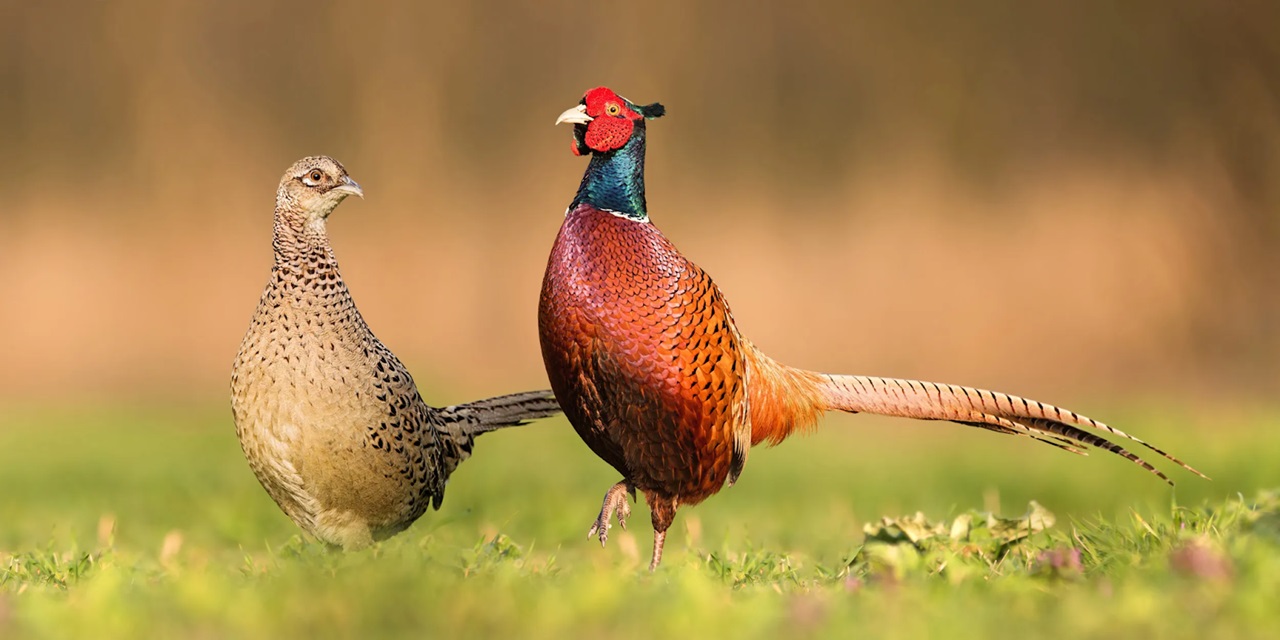
A pair of male and female red pheasants with different appearances.
Red pheasants have distinct physical differences between males and females, please refer to the details below.
|
Criteria |
Male Red Pheasant |
Female Red Pheasant |
|
Length |
75 - 90 cm (including tail) |
55 - 65 cm (including tail) |
|
Average weight |
1.2 - 1.5 kg |
0.9 - 1.1 kg |
|
Head |
Small head compared to body, hairless face, bright red Eyes with metallic blue or purple rims Small red crest |
The face is hairless but not red like the male bird, less prominent. Eyes with light gray rims, metallic rims |
|
Neck |
Medium length, neck feathers are metallic cobalt blue White ring around neck or not depending on species |
Shorter than the male, brown with black spots looks very simple |
|
Chest, shoulders, back |
Thick fur, with a coppery purple or blue-violet sheen Shoulders and back are bronze, moss green or metallic with black trim. |
Coat is greyish brown, with black scaly spots or pale edges, without metallic sheen. |
|
Wing |
Short, round, can only fly short distances |
Short, round, can only fly short distances |
|
Tail |
Long, slender, fan-shaped, with distinct horizontal striped pattern |
Tail is shorter, light brown with black stripes |
|
spurs |
Curved, sharp spurs |
No spurs, slimmer legs |
Red Pheasant Behavior & Attitude
Let's learn about some of the typical habits and behaviors of red pheasants to see if this bird has anything interesting.
Live together
Let's learn more about the living habits of red pheasants:
Lifestyle :
- Live alone or in small groups, not in large herds
- Red hemorrhoids are mainly active during the day and rest at night.
- They live underground, and only jump to high branches when sleeping or avoiding predators.
Favorite living environment :
- Lives in grasslands, sparse forests, bushes, and wild fields where humans rarely appear.
- In captivity, you need a large enough space, with shrubs and loose soil.
Reproductive behavior
Here are details about the breeding habits of red pheasants:
- Breeding season March - June
- The male bird will crow loudly, spread its tail, ruffle its feathers, and spin in circles to attract a mate.
- They usually make simple nests on the ground with a little dry grass underneath.
- Each red pheasant lays 8 - 15 eggs, the eggs are light brown or ivory white.
- The female incubates the eggs for about 23 - 26 days, then raises and cares for the chicks herself; the male does not participate in this at all.
Foraging behavior
Red pheasants are omnivorous birds, foraging for food on the ground by scratching and picking, and usually foraging in the early morning or late afternoon, not at noon. They can eat the following foods:
- Cereals such as rice, corn, millet
- Young leaves, young shoots
- Insects such as bugs, ants, grasshoppers
- Earthworms, small snails, slugs and even the eggs of other birds
Defensive behavior
Red pheasants are very alert birds. When in danger, instead of flying, they will run very fast and only fly when cornered because they are not good at flying.
In captivity, if they are disturbed too much, it can lead to stress, loss of appetite, or even pecking at each other.
Special behavior
In addition to the above habits, red pheasants also have some special behaviors as follows:
- Sand bathing Normal behavior to help them clean their fur and remove parasites from their fur.
- Male birds often crow to cause alarm when there are strange sounds or human shadows.
- Red pheasants molt seasonally, during which time the male bird loses its bright colors and then grows them back.
- If kept in captivity for too long, red pheasants will become stressed and will pluck their own feathers.
Red pheasant farming techniques achieve high economic efficiency
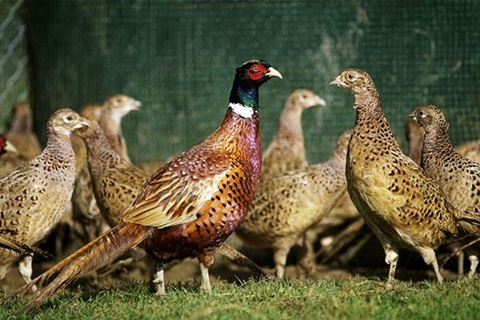
Instructions on the most effective red pheasant farming techniques.
Currently, red pheasants are very popular in Vietnam in the home-farm model because they bring high economic efficiency. Here are some basic techniques to help you achieve the highest efficiency when raising this bird. Let's find out now.
Choose quality breeds
First, if you want your pheasants to grow healthy and fast, you need to pay attention to choosing the breed because this is a very important key.
Some notes when choosing red pheasant breed :
- Choose seeds with clear origin and no signs of disease.
- Choose healthy, smooth-feathered, agile birds
- You should choose purebred or white-necked red pheasants to be both easy to raise and have high productivity.
Scientific and suitable barn design
Pheasants can only thrive when raised in a suitable environment, so when designing a cage to raise this bird, you need to keep in mind the following:
- Area: 4 - 6 m3/1 pair
- The cage must be high, airy, with a roof to protect from rain and sun.
- The floor should be sprinkled with fine sand or rice husks so they can sandbathe or dig every day.
- You should plant some bushes to both shade and simulate the natural environment of this bird species.
- Design the farrowing area in a quiet corner, lined with straw and hay.
- If breeding, separate pairs or group 1 male with 2-3 females to make breeding easier.
Provide a reasonable diet
As shared above, red pheasants are omnivorous so you can feed them the following foods:
- Natural food: rice, crushed corn, green vegetables, worms, insects,...
- Industrial feed: Mixed bran contains 18-22% protein
- Periodic supplements: vitamins A, D, E, oyster powder,...
Proactive care and disease prevention
To help red pheasants stay healthy and grow quickly, you need to pay attention to care and disease prevention, specifically as follows:
Barn care & cleaning :
- Change bedding and sand every 2-3 weeks to maintain hygiene and avoid infection.
- Clean food and water troughs every day
- Monitor birds every day to detect unusual symptoms such as loss of appetite, ruffled feathers, diarrhea, etc. so that they can be treated promptly to avoid spreading.
Proactive disease prevention :
- Vaccinations Newcastle, Pasteurellosis and Gumboro periodically
- Every 2 weeks, supplement digestive enzymes, electrolytes, and B1 once.
- Deworming every 3 months
Should I raise red pheasants or green pheasants?
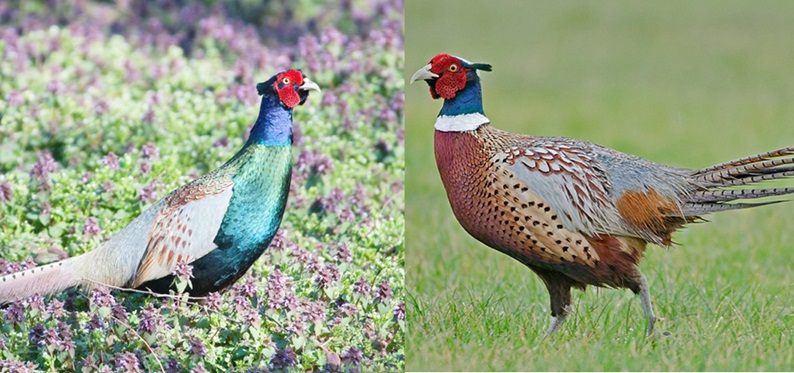
The color difference between red pheasants and blue pheasants.
Depending on the purpose of raising, you can choose between red pheasants and green pheasants because each type has its own strengths. For example:
- Raising for economic and commercial purposes: Red pheasants should be chosen because they are easy to raise, easy to lay eggs, have delicious meat and have a large market demand.
- High-end pet raising: You should choose green pheasants because of their impressive, luxurious colors and this bird is also popular among high-end pet birds.
Questions and answers about red pheasants
Is the red pheasant a rare species?
No, red pheasants are not listed as globally endangered by the IUCN and are widely farmed, except for some ancient and somewhat rare varieties such as P. c. colchicus.
Can red pheasants fly?
Yes, red pheasants can still fly but only for short distances of about 10 - 20 m, instead they run quite fast.
What do red pheasants eat?
Red pheasants are omnivorous, they can eat grains, green vegetables, insects, industrial bran,...
Do red pheasants crow?
Yes, male red pheasants have a loud and noisy crow that can be heard from afar, especially during breeding season. However, they will not crow continuously like chickens.
Beautiful red pheasant pictures
We invite you to enjoy the most beautiful and authentic images of the red pheasant - a bird with luxurious beauty with copper-red feathers and a long, graceful tail. We guarantee you will love these moments.
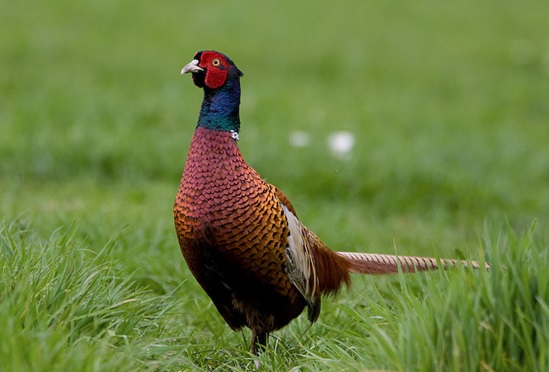
A male red pheasant with colorful plumage.
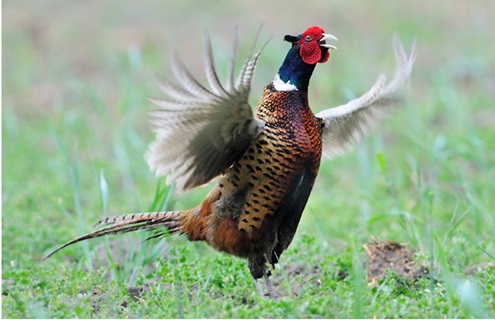
Image of red pheasant spreading its wings.
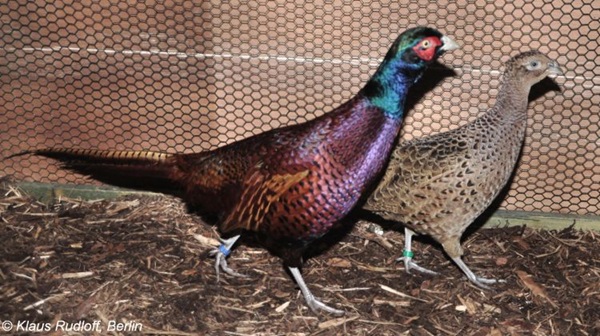
Male and female red pheasants are kept in cages.
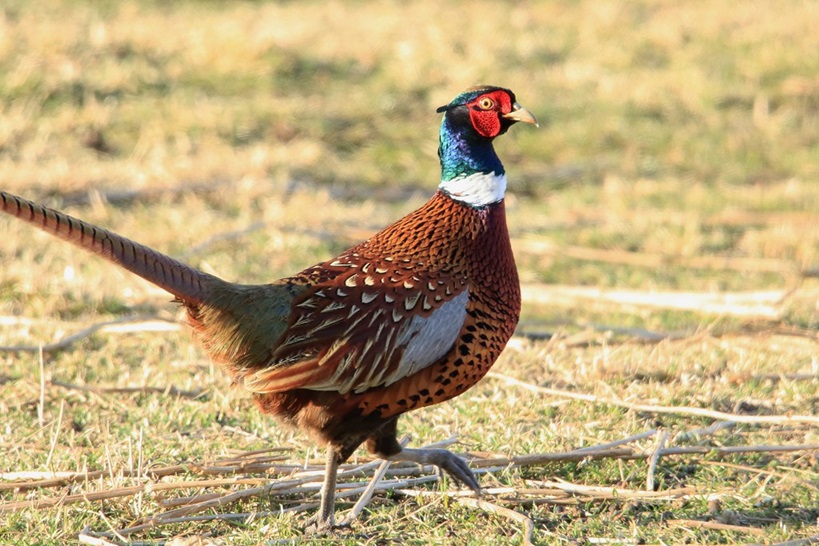
Image of male red-necked pheasant with white neck ring.

Image of a red-necked pheasant crowing.
Through the article that nicebirds.net shared above, it can be seen that red pheasants are not only a symbol of luxurious and noble beauty in the world of ornamental birds but also a great suggestion for a breeding model that brings high economic efficiency, you can consider choosing more.
Don't forget to visit our Blog section to discover more about many other beautiful and unique bird species!
